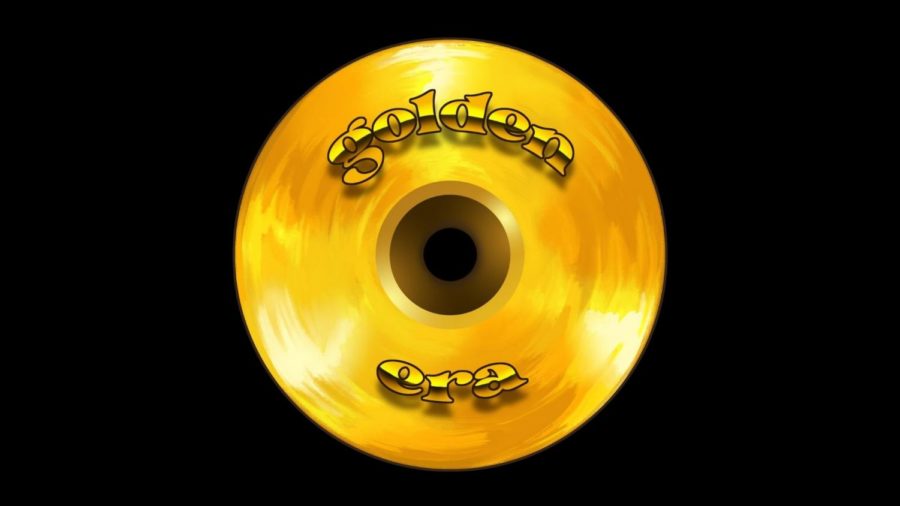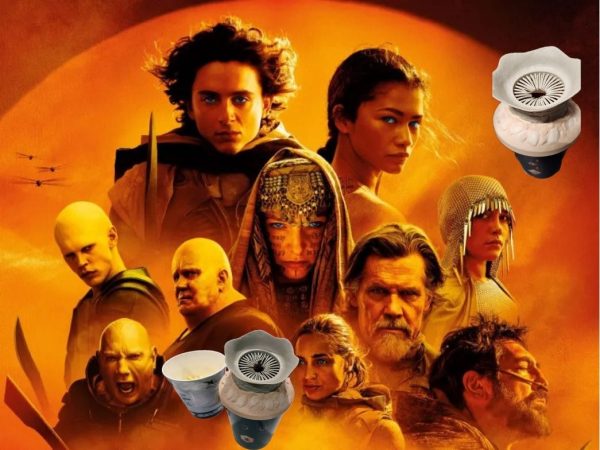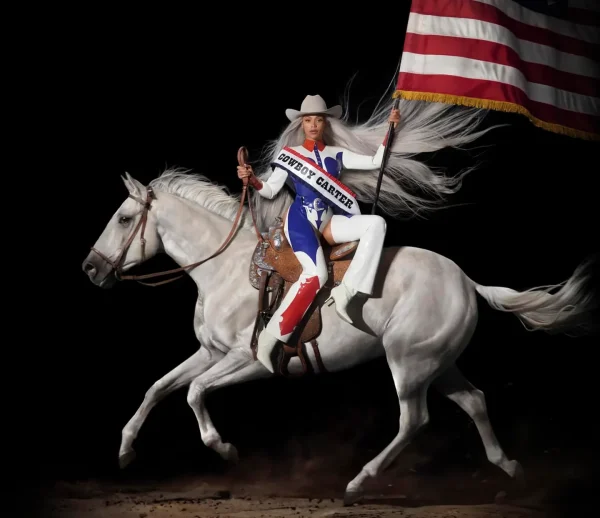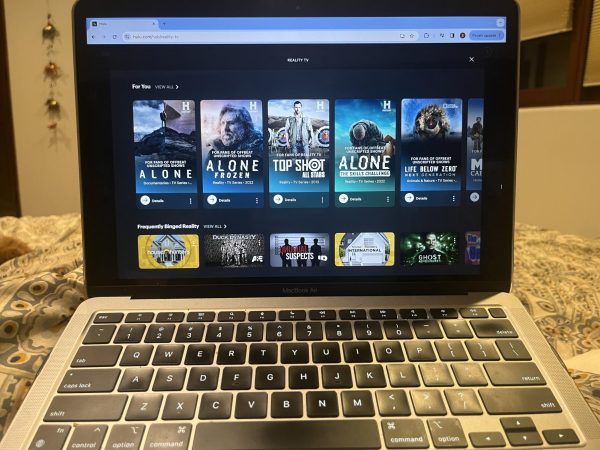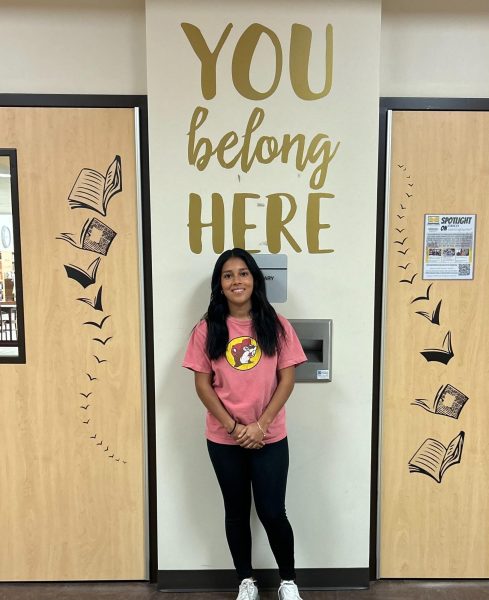The Golden Era and modern rap
How 90s hip-hop artists have shaped the current rap scene
Illustration by Sophia Ma
Journalist Jeff Chang coined the name “Golden Era” for the period of rap music produced from 1986 to the late 1990s
December 15, 2021
“This is dedicated to the ni**as that was down from day one. Welcome to Death Row.”
Then, Calvin Cordozar Broadus Jr. a.k.a Snoop Dogg’s synth vocals overtake Andre Romelle Young a.k.a Dr. Dre’s opening lines of “The Chronic (Intro),” the hit opening song from his album “The Chronic,” as rolling basslines and a funkadelic beat plays in the background. Long before “The Chronic” became one of the most influential and acclaimed records in hip-hop history and before it became the first CD social science teacher Bonnie Belshe purchased one on her own dime, Black America had been piecing together the music, culture, struggles and stories that has defined hip-hop into the modern era.
Rap music secured its beginnings from the West African drum rhythms that traversed oceans on slave ships. Then, Blues musicians that traveled from the Mississippi Delta in the South to Memphis, St. Louis, Chicago and Detroit sprinkled in their own influences of gospel and country western. It was these struggles that manifested in the Hoe Avenue Peace Meeting, a peace treaty between 40 of New York’s biggest gangs in the 1970s, giving way to DJ and MC battles in the South Bronx, the birthplace of gangsta rap. In the 1980s, Afrika Bambaataa coined the term “hip-hop” as Black culture grew increasingly popular with white youth, and created the first hip-hop institution: Universal Zulu Nation. This eventually led to rappers like Ice-T (Tracy Lauren Marrow), Dr. Dre and 2PAC (Tupac Shakur), artists who defined the period of rap music from the mid 80s to the late 90s that journalist Jeff Chang coined the “Golden Era” of the genre.
“There is a very clear understanding of the history that hip hop artists have — they know Black history,” Belshe said. “They understand it, they live it. Their music is such a vibrant representation of all of that, from slavery, through Black Power, right through the rise of current mass incarceration. That history is represented in all of it — both in the sound and in the lyrics.”
Senior Gohitha Venkluri, who initially became interested in 90s lyrical rap during the summer of 2020, was drawn to it precisely because of the “intricacy” of the lyricism. Whereas he felt modern rap focused on many of the same overused themes like drugs and wealth, he was enticed by the complex hip-hop rivalries, themes of brotherhood and myriad of styles that infused 90s hip-hop music.
“[In the 90s], the lyricism and the poeticism was at its peak,” Venkluri said. “Nas, Jay-Z, 2PAC, Biggie, they actually talk about real stuff. They paint stories from their lives, their own experiences really show and they show their emotions. The way [90s hip-hop] was presented, the delivery — there was more thought put into it as an art form and more skill.”
Venkluri and Belshe attribute much of the evolution of the rap scene to the creation of music for mass production and consumption. Despite this, Venkluri doesn’t believe that the rap scene has declined — rather, he believes that the best lyricism and rhythms of today are as good as the best music of the 90s. With the advent of Soundcloud rapping and proliferation of music over social media platforms, however, Venkluri explains that the rap music scene has merely gotten “bloated” with mediocre music as well.
Current artists whose music Venkluri believes is strongly influenced by the 90s include A$AP Rocky (Rakim Meyers) and Joey Bada$$ (Jo-Vaughn Virginie Scott), Harlem and Brooklyn natives respectively. He also sees the thoughtful lyricism of 90s artists echoed in the work of artists like Pulitzer Prize-winning artist Kendrick Lamar (Kendrick Lamar Duckworth), a sentiment echoed by senior Samika Swamy, who also enjoys the rich lyricism of artists like Kanye West and Earl Sweatshirt (Thebe Neruda Kgositsile), both Chicago natives. However, Swamy explains that she also enjoys the more melodious vocals and snare beats of trap artists like Lil Uzi Vert (Symere Bysil Woods) and Playboi Carti (Jordan Carter).
“[Trap music] puts me in a good mood because it’s also hype,” Swamy said. “It keeps my energy level high. I like listening to that type of [music] while I do homework because it’s motivating, energizing and keeps you in a positive mood the whole time.”
Along with its influence on music through history, Belshe explains that Black culture, specifically Black hip-hop vernacular, has shaped “mass pop culture” today. With the mass proliferation of Black America’s music through history, and with it, Black culture, Belshe emphasizes the importance of acknowledging where the art and culture that people consume originates from.
“We have to acknowledge that and understand that and look to make reparations against those Black people that have [been discriminated against for expressing that pop culture],” Belshe said. “So much of what is considered ‘academic’ and ‘professional’ is from white supremacy. We cannot talk out of both sides at the same time and take the pieces [of Black culture] that are that people think are fun and want to listen to without understanding the very real pain and joy from the Black community of where this [culture] comes from.”
This story was originally published on El Estoque on December 8, 2021.





























![IN THE SPOTLIGHT: Junior Zalie Mann performs “I Love to Cry at Weddings,” an ensemble piece from the fall musical Sweet Charity, to prospective students during the Fine Arts Showcase on Wednesday, Nov. 8. The showcase is a compilation of performances and demonstrations from each fine arts strand offered at McCallum. This show is put on so that prospective students can see if they are interested in joining an academy or major.
Sweet Charity originally ran the weekends of Sept. 28 and Oct. 8, but made a comeback for the Fine Arts Showcase.
“[Being at the front in the spotlight] is my favorite part of the whole dance, so I was super happy to be on stage performing and smiling at the audience,” Mann said.
Mann performed in both the musical theatre performance and dance excerpt “Ethereal,” a contemporary piece choreographed by the new dance director Terrance Carson, in the showcase. With also being a dance ambassador, Mann got to talk about what MAC dance is, her experience and answer any questions the aspiring arts majors and their parents may have.
Caption by Maya Tackett.](https://bestofsno.com/wp-content/uploads/2024/02/53321803427_47cd17fe70_o-1-1200x800.jpg)
![SPREADING THE JOY: Sophomore Chim Becker poses with sophomores Cozbi Sims and Lou Davidson while manning a table at the Hispanic Heritage treat day during lunch of Sept 28. Becker is a part of the students of color alliance, who put together the activity to raise money for their club.
“It [the stand] was really fun because McCallum has a lot of latino kids,” Becker said. “And I think it was nice that I could share the stuff that I usually just have at home with people who have never tried it before.”
Becker recognizes the importance of celebrating Hispanic heritage at Mac.
“I think its important to celebrate,” Becker said. “Because our culture is awesome and super cool, and everybody should be able to learn about other cultures of the world.”
Caption by JoJo Barnard.](https://bestofsno.com/wp-content/uploads/2024/01/53221601352_4127a81c41_o-1200x675.jpg)




